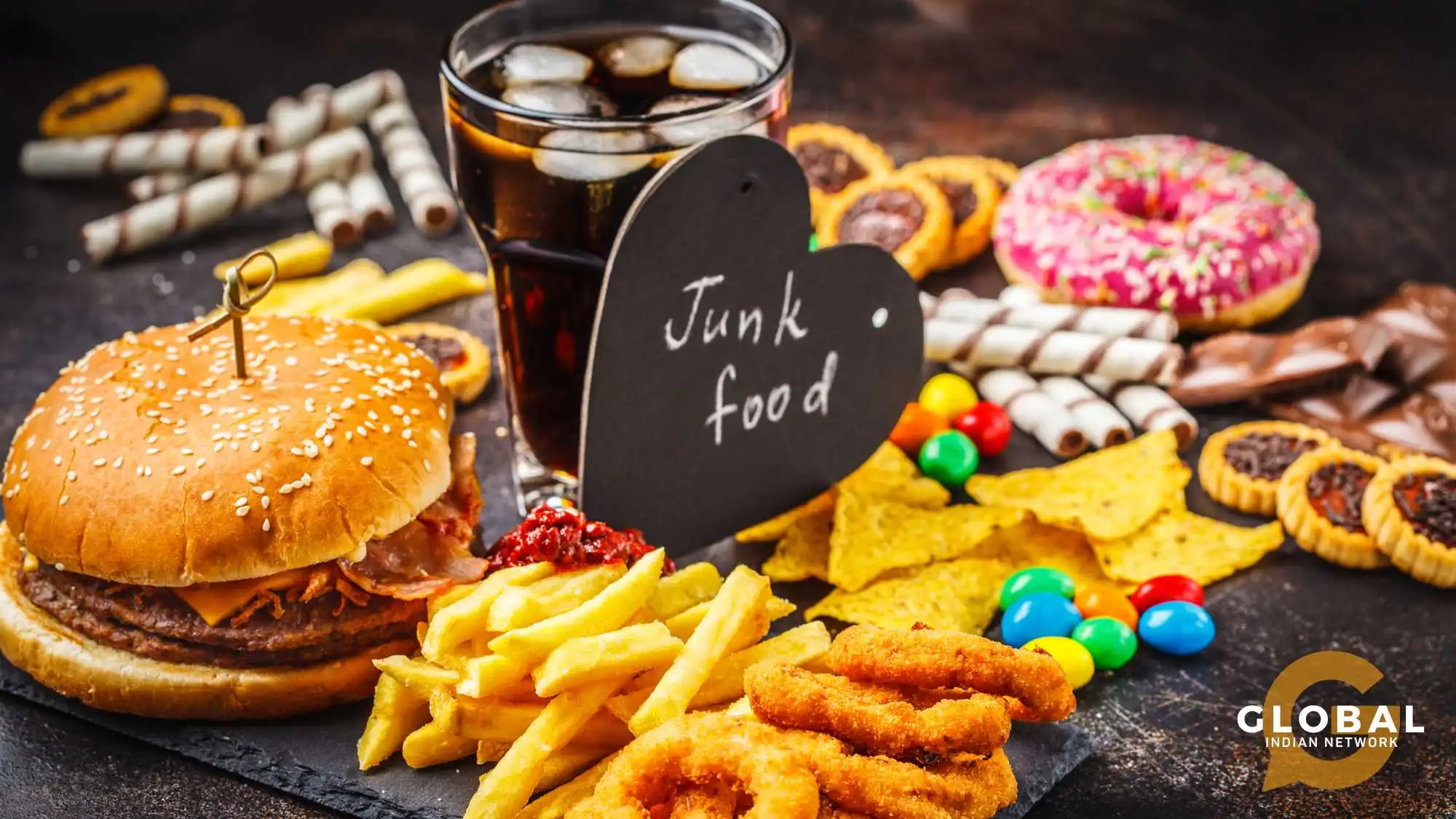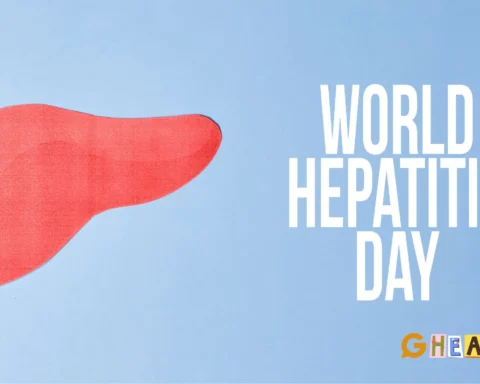‘Escape the Silent Killer’
You are not junk, are you? If you are not, then great! But if you want to be, there is an easy way. Eat junk food.
Looks like fast food is here to stay. Otherwise, why would there be so much advertising for junk food?
Table of Contents
Human Body
Human bodies are a beautiful and complex synergy of the sciences of biology, physics, chemistry, and many more that we do not know the names of. In essence, we are a chemical soup of very many ingredients. Just like food, the proportions have to be correct to be at an optimum level.
The solid soup that we are has taken years to grow. We were appropriately fed to have good health and do what we wanted.
Junk Food
Junk food (discretionary food) is characterised by its high calorie, sugar, and fat content and minimal nutritional value. Examples include:
- Cakes and Biscuits (high levels of added sugars, unhealthy fats, and refined carbohydrates)
- Fast Foods: Hot chips, burgers, pizzas (high in calories, saturated fats, and processed carbohydrates)
- Chocolate and Sweets (high in sugars and calories, may contain metals)
- Cereals (refined grains and sugars)
- Processed Meat: Bacon (high in sodium and saturated fat)
- Snacks: Chips (Acrylamide Content, low nutritional value)
- Sugary Drinks: Sports, energy, and soft drinks (empty calories, high in sugar, no nutritional value, high caffeine levels)
- Alcoholic Drinks (chances of ethanol, carbonyl compounds, metals - Jokingly referred to as 'What's your poison?')
The rise of junk food can be attributed to several socio-economic factors, including the increasing availability and affordability of processed foods, the changing lifestyles of people, the marketing and advertising of junk food, and the lack of access to healthy foods in many communities, particularly in low-income areas.
Neurobiology: Why Do We Get Hooked?
Junk food can stimulate the brain's reward system in a way similar to addictive drugs like cocaine. The brain releases dopamine, a chemical that promotes feelings of pleasure, during behaviours necessary for survival, like eating. However, modern junk food induces a much stronger reward response than whole foods, creating a heightened response that can lead to addiction. This addiction is characterised by tolerance and withdrawal, similar to drug addiction. Studies show that rats can become physically addicted to junk food, similar to addictive drugs.
When You Have Junk Food
Food comprises three major nutrients: carbohydrates, proteins, and fats. Food also has vitamins and minerals that support good health, growth, and development.
Let us consider the example of a hamburger. A burger contains carbohydrates from the bun, proteins and fats from the beef patty, and fats from the cheese and sauce. A burger from a fast-food chain contains 36–40% of your daily energy needs, which does not account for any chips or drinks consumed with it (Figure 1).
Figure 1 - The nutritional composition of a popular burger from a famous fast-food restaurant, detailing the average quantity per serving and per 100 g. Based on the Australian dietary guidelines, just one burger can be 36% of the recommended daily energy intake for teenage boys aged 12–15 years and 40% of the recommendations for teenage girls 12–15 years.
In the short term, junk food can make you feel tired, bloated, and unable to concentrate. Long-term, junk foods can lead to tooth decay and poor bowel habits.
Foods like walnuts, berries, tuna, and green veggies can boost concentration levels. It is essential for young minds who are doing lots of schoolwork. These are the foods athletes eat! In contrast, eating junk food can lead to poor concentration. Eating junk food can lead to swelling in the area of our brain, which has a significant role in memory.
A study on humans found that eating an unhealthy breakfast high in fat and sugar for four days continuously causes disruptions to the parts of the brain responsible for learning and memory. (Source: kids.frontiersin.org)
Health Issues
Junk food, characterised by high levels of calories, sugar, and fats, poses significant health risks:
Obesity: The calorie-dense nature of junk food contributes to weight gain and obesity, elevating the risk of heart disease, diabetes, and certain cancers.
Type 2 Diabetes: The high sugar content in junk food can lead to insulin resistance, a major factor in the development of type 2 diabetes.
Heart Disease: Junk food is full of saturated and trans fats that can elevate cholesterol levels, increasing the risk of heart disease.
Cancer: Diets rich in junk food may heighten the risk of certain cancers, such as colorectal cancer.
Depression and Mental Health Issues: High consumption of junk food is associated with an increased risk of depression and other mental health problems.
Maintaining a balanced diet and limiting junk food intake is advisable to promote overall health and well-being. A diet predominantly consisting of such foods can lead to various health issues. Adopting a balanced diet rich in fruits, vegetables, whole grains, and lean proteins is essential for maintaining overall health and well-being.
Health Warnings on Products
Junk food packaging often includes health warnings to inform consumers about the nutritional content and potential health risks. These warnings include "High in Sugar" for sugary drinks, candies, and chocolates, highlighting excessive sugar content. "High in Salt" is found on salty snacks like chips and pretzels, warning about elevated salt levels. "High in Fat" is displayed on fried foods and processed meats, indicating a high fat content. "High in Calories" is identified in fast food and snacks with low nutritional value. Additionally, warnings like "May Contribute to Obesity" are seen on sugary drinks and processed snacks, suggesting a potential link to obesity. These warnings aim to raise awareness and encourage informed choices about consuming junk food.
Statistics
A study showed that adolescents aged 12–17 view over 14.4 million food advertisements in a year on popular websites. Cakes, cookies, and ice cream were the most commonly advertised products. A separate study examining YouTube videos popular among children found that 38% of all ads involved a food or beverage, and shockingly, 56% of those food ads were for junk food. (Source: kids.frontiersin.org)
Statutory Regulation
The Food Safety and Standards Authority of India (FSSAI since 2008) has made it mandatory for food manufacturers to display nutritional information in larger font sizes on packaging. They have also introduced a new definition of children in the food industry. In the United States, a similar call for more prominent calorie labels on food packaging has been driven by organisations like the Center for Science in the Public Interest (CSPI since 1971). This reflects a global trend towards more transparent and accessible food information, in line with consumer demands for transparency and informed choices.
How Can Health Warnings Be Made More Effective?
It is crucial to provide specific and detailed information to enhance the effectiveness of health warnings. This includes quantifying risks and specifying the effects, such as financial, economic, and environmental costs, casualties, and examples of destruction. Mandated descriptions of harmful health effects and specific illnesses caused by the product should be included. The written warnings should be large, clear, and legible. Language and warnings should cover all possible scenarios and be concrete. Graphic and attention-grabbing images should accompany the warnings. Regular updates based on the latest scientific evidence are essential, and enforcement by regulatory authorities
is necessary for effective implementation.
Healthy Aisles
There have been efforts to create healthy aisles in grocery stores. One way to do this is by placing more nutritious foods in prominent locations, such as at eye level, and by placing less healthy foods in less prominent locations. Another way is to create separate sections of the store that are dedicated to healthy foods, such as fruits, vegetables, whole grains, and lean protein sources. Some grocery stores have also started to offer nutrition education programs and cooking classes to help customers make healthier choices.
Implications of Advertising of Junk Food
Advertising can impact consumer behaviour in various ways:
Entertainment: Advertisements aim to entertain the audience (make them happy and puppy-like), making them more receptive to the message and the brand being promoted.
Information: Advertisements provide information (or seem to provide) about products and services, helping consumers make informed decisions.
Persuasion: Advertisements can persuade (nudging those on the fence) consumers to try a product or service, boosting their confidence in its ability to meet their needs.
Brand awareness: Advertisements contribute to brand awareness, influencing consumer buying behaviour and loyalty (a consumer for life).
Celebrity influence: Celebrities or personas used in ads can positively influence consumers' buying intentions (they are trying to tell you to be in the same league as the celebrity, and are you buying that nonsense?).
Emotional connection: Advertisements can evoke emotions (who doesn't have emotions?) in consumers, fostering a stronger connection with the brand and increasing the likelihood of purchase.
Status symbol: Advertisements may emphasise products and services as status symbols (peer group pressure), influencing consumers' decisions and purchases.
Health and well-being: Advertisements can promote unhealthy products or practices (feigning to be your well-wisher), potentially influencing consumers' health and well-being decisions.
Consumers should be aware of these influences and make informed decisions about their purchases and consumption habits, considering the persuasive tactics used in advertising and the underlying messages promoted by brands.
Banned Adverts
There have been several examples of banned ads on junk food. In the UK, junk food ads have been banned from appearing on television before 9 p.m. In Brighton and Hove, junk food advertisements have been forbidden from bus and taxi shelters and council-owned billboards. In addition, there are restrictions on advertising fast food takeaways within 100 meters of any school, youth club, NHS building, or public sector building used by those under 18 in some cities.
Junk food ads to be banned from bus shelters - brightonandhovenews.com (10 December 2023)
Reasonable Quantity of Junk Food
Did you know that according to the Australian Dietary Guidelines, a healthy, balanced diet can include a modest amount of discretionary or junk food? Yes, you heard it right! You can decide when and how much of these foods to consume. The average adult should ideally limit their intake of discretionary foods to none to three servings per day, considering factors such as age, height, and activity level. Remember, while occasional consumption of junk foods is acceptable, they should not exceed 10% of your daily energy intake. So, take control and make wise choices for your health.
Alternatives to Junk Food
Have you ever considered replacing your regular potato chips with something more nutritious yet equally delicious? How about vegetable chips made from seaweed, kale, or parsnips? Sounds interesting, doesn't it? Give it a try and discover a new world of flavours.
Sugary Drinks – opt for lemon water without sugar or homemade smoothies.
Cheese and crackers – replace with seeded crackers, roasted nuts, and dried fruits.
Fattening dips – opt for fresh mango dipping sauce or fresh salsa with raw veggies.
Some other options you can go for are cottage cheese, Greek yoghurt, fruit and nut butter, olives, chocolate-dipped nuts, fruits, cheese crisps, baked low-carb vegetables, air-popped popcorn, dark chocolate (at least 70% cocoa), grilled chicken, and quinoa salad.
Health Star Rating
Have you ever felt overwhelmed while trying to choose the healthiest packaged food? The Health Star Rating System is here to help! This voluntary front-of-pack labelling system rates the nutritional profile of packaged food, assigning a rating from ½ a star to 5 stars. The more stars, the healthier the choice. It considers factors like saturated fat, sodium, sugars, and energy linked to chronic diseases. Introduced in Australia in 2014, it is now found in over 10,300 packaged food products. So, look for the stars next time you shop and choose confidently.
Health Star Ratings in Australia
Conclusion
Not a single day passes when we, as consumers, are not enticed by the adverts. Advertising of junk food pays. Marketers are not foolish enough to spend tons of money on adverts. They understand the psychology of consumers and the pulse of the audience. As long as we keep buying, they will produce. Demand creates supply- the age-old concept still holds true. Not all governments want to regulate private enterprises. Not all business owners want to lift a finger. But remember, you have the
power. Your choices can shape the market.
So that leaves YOU! You are your own best advocate. Your health choices are in your hands. Could you take responsibility for them?
Your mind may fool you (by craving more and more), but eventually, the body will spill the truth (because it cannot take the abuse anymore). It is clear where the control point is.
Source: istockphoto.com
FAQs
Should junk food be advertised?
While some argue for the importance of freedom in advertising, there is growing concern that promoting junk food can contribute to unhealthy lifestyles and public health issues.
How is fast food advertising bad?
Fast food advertising is often criticised for glamorising unhealthy food choices, contributing to obesity, and fostering a culture of overconsumption, negatively impacting individuals' well-being.
Why advertising junk food should be banned?
Banning the advertising of junk food is advocated to address the public health implications associated with excessive consumption of unhealthy foods and to encourage better dietary choices.
Why are junk food ads bad for kids?
Junk food ads can be particularly detrimental to kids, as they may lack the ability to make informed choices, making them more susceptible to unhealthy food marketing and potentially leading to long-term health problems.










